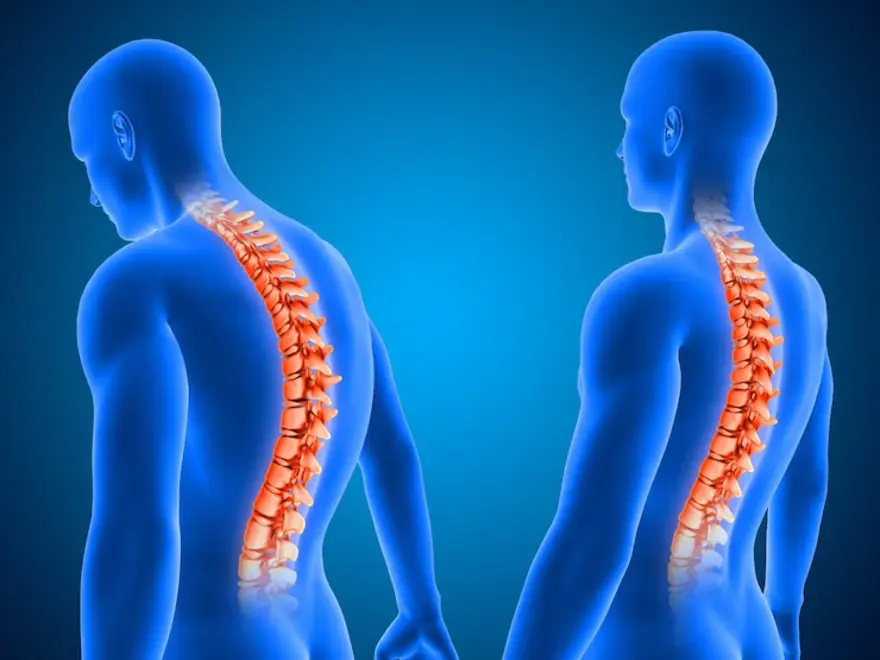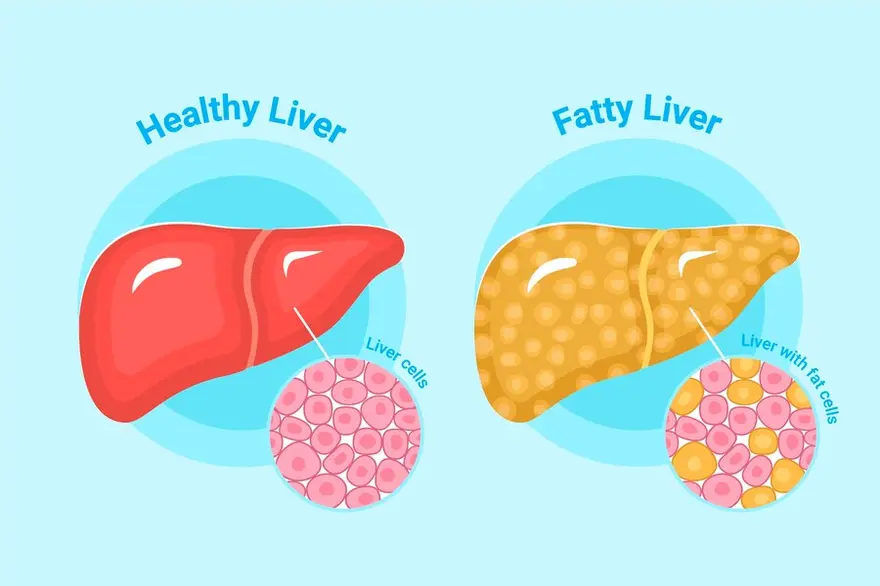kyphosis
Understanding Kyphosis (Roundback): Symptoms, Causes, and Treatment
Have you ever seen someone with a rounded back? It is a postural issue that can affect people of all ages, impacting posture, comfort, and overall spinal health. This condition is medically termed as kyphosis. In this guide, we discuss everything you need to know about kyphosis, what it is, why it happens, its symptoms, as well as treatment options, shedding light on how you can maintain a balanced and pain-free spine. Stay with this guide to know more! What is kyphosis? Kyphosis is a spinal condition characterised by an excessive outward (forward) curvature of your upper back, resulting in a rounded or hunched appearance. It is commonly known as roundback or hunchback. What are the types of kyphosis? Postural Kyphosis: Develops due to poor posture habits. Scheuermann's Kyphosis: Affects adolescents during growth spurts and involves structural changes, such as wedging of your vertebrae, leading to a rigid kyphotic curve. Congenital Kyphosis: Present at birth due to abnormal spine development. Degenerative Kyphosis: Develops with age due to spinal degeneration and causes a forward curvature in the elderly. Neuromuscular Kyphosis: Muscular imbalance contributes to the abnormal curvature Post-Traumatic Kyphosis: Results from spinal fractures or injuries. How common is kyphosis? Kyphosis (Roundback): Symptoms, Causes, Treatment and TypesIt is relatively common, with prevalence varying based on age groups and underlying causes of kyphosis. Postural kyphosis is frequent among adolescents, while degenerative kyphosis is more prevalent in older adults. Scheuermann kyphosis, the most common type, is estimated to affect 4-8% of the overall population. What are the symptoms of kyphosis? Common kyphosis symptoms include: Visible forward rounding of your upper back. Discomfort or pain in the affected area of your back. Reduced flexibility in your spine. Tiredness associated with maintaining an abnormal posture is a common kyphosis symptom. What causes kyphosis? There are many causes of kyphosis depending on its type: Abnormal spinal development in adolescence. Disc degeneration, osteoporosis and arthritis. Spine malformations present at birth. Conditions like cerebral palsy affecting muscle balance. Physical trauma to the spine Can kyphosis turn into scoliosis? No, kyphosis and scoliosis are distinct spinal conditions. However, in some cases, severe kyphosis may coexist with scoliosis. However, one does not typically transform into the other. What are the risk factors for kyphosis? Risk factors for kyphosis are: Older adults are at a higher risk due to degenerative changes in the spine. Prolonged slouching or sitting improperly contributes to postural kyphosis. Family history can predispose you to certain types of kyphosis. Connective tissue disorders like Marfan syndrome or Ehlers-Danlos syndrome may affect the spine's structure. Tumours in your spine can lead to structural changes and increase the risk of kyphosis. Long-term use of corticosteroids can weaken your bones and contribute to vertebral compression fractures, leading to kyphosis. What are the complications of kyphosis? Complications of kyphosis depend on underlying kyphosis causes which may include: Breathing difficulties due to pressure on your chest. Nerve compression may lead to numbness, tingling, or weakness. Chronic pain and limited mobility impact the overall quality of your life Severe kyphosis can affect your abdominal space, potentially impacting digestion. Pressure on your spinal cord may lead to neurological symptoms in severe cases. How is kyphosis diagnosed? The initial diagnosis of kyphosis involves the evaluation of your posture, flexibility, and range of motion through a bending test. After this, your symptoms of kyphosis, family history, and potential risk factors are assessed to determine the type and severity of your spinal curve. What tests diagnose kyphosis? Following the initial diagnosis of your kyphosis type, your doctor may conduct additional tests like: Imaging studies such as X-rays, CT scans, or MRI to visualise your spine's structure. Bone Density Scan (DEXA) to assess your osteoporosis risk. Pulmonary Function tests to evaluate your lung capacity and respiratory function, especially if you have severe kyphosis. Blood tests to rule out conditions like infections or autoimmune disorders contributing to kyphosis. How is kyphosis treated? Kyphosis treatment for mild cases includes physical therapy to strengthen your supporting muscles and improve posture. Bracing may be recommended for adolescents with Scheuermann's kyphosis. Severe or progressive cases may require surgery to correct spinal curvature. Pain management and lifestyle modifications are integral components of non-surgical approaches. How will your healthcare provider decide what kyphosis treatment you need? Your healthcare provider determines kyphosis treatment based on factors like the type, severity, and underlying cause of kyphosis. They also consider your age, overall health, and lifestyle. Are there side effects of the treatment? Physical therapy for kyphosis is usually risk-free. Surgical interventions may carry risks such as infection, blood clots, or complications related to anaesthesia. It's important to discuss potential side effects with your doctor to avoid risks. Can kyphosis be prevented? Yes, kyphosis can be prevented by: Practising proper body mechanics and ergonomics. Strengthening core muscles with kyphosis exercises to support your spine. Adequate nutrition, calcium, and vitamin D consumption to help maintain bone health. Taking breaks, stretching, and varying positions. What can you expect if you have kyphosis? Living with kyphosis often involves adopting posture-conscious habits and maintaining a healthy lifestyle. If you have mild kyphosis, you may experience minimal discomfort, which you can address through exercises. Severe cases may require surgery but such cases are generally rare. Does kyphosis come back? The recurrence of kyphosis depends on various factors, including the effectiveness of treatment, and individual factors. Postural kyphosis corrected through exercises and improved habits have a reduced likelihood of recurrence. However, kyphosis associated with structural abnormalities, may have a risk of returning, especially if the underlying condition isn't fully addressed. What’s the outlook for kyphosis? Mild kyphosis cases corrected through exercises and lifestyle changes often have a good prognosis with minimal impact on your daily life. Congenital, neuromuscular, or advanced degenerative kyphosis may require continuous management. When to see a doctor? It's advisable to see a doctor if you experience the following kyphosis symptoms: Visible changes in posture Persistent back pain Breathing difficulties Neurological symptoms such as numbness or weakness in your limbs. Conclusion Kyphosis, while diverse in its causes and manifestations, can be effectively managed with early detection and appropriate physical therapy. With a combination of medical guidance, lifestyle adjustments, and, if necessary, surgical measures, you can maintain spinal health and a better quality of life. If you are experiencing progressive forward curving of your spine, you should get your bone health tested with a precise and affordable osteoporosis profile test, available at Metropolis Labs. With state-of-the-art testing facilities, Metropolis Healthcare is committed to providing you with the best at-home diagnostic services across India. Book your test today!











1736772454.webp)


 WhatsApp
WhatsApp